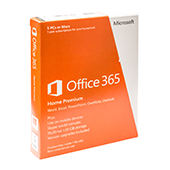 Companies are increasingly tapping into a virtual, on-demand workforce. The human cloud offers a competitive advantage for startups and small- and medium-sized businesses (SMBs) by letting them outsource specialized skills and expertise globally. Let’s take a look at what the human cloud is and how it enhances remote team collaboration.
Companies are increasingly tapping into a virtual, on-demand workforce. The human cloud offers a competitive advantage for startups and small- and medium-sized businesses (SMBs) by letting them outsource specialized skills and expertise globally. Let’s take a look at what the human cloud is and how it enhances remote team collaboration.
What is the human cloud?
The human cloud is a working platform where staff perform white-collar tasks from any location and on any device. Collaboration, file sharing, or discussions on projects are done in a flexible and productive manner, rewarding team members solely for their output.
Benefits of hiring on the human cloud
Companies looking to take advantage of the human cloud are entitled to the following benefits:
- Low cost
The human cloud helps save time and money spent on traditional employment processes. Hiring is fast and easy, and you pay for the skills you need on a transactional basis. - No overhead
Hiring through the human cloud requires no overhead for office space, thereby enabling firms to stay lean and profit-focused. By becoming virtual, teams can work independently from anywhere. Remote collaboration via the human cloud is a game-changer that benefits companies, such as startups, that are inclined to spend fewer resources to build their business infrastructure. - Get skills on demand
Employers can contract for micro-tasks, such as copying text from business cards, to larger tasks, like selling products for a fee, to even more complex projects such as software design and programming. - Global talent pool
Even startups can be multinational today, so they are no longer limited by geography in finding key talent with specialized skills. Business can leverage overseas creative, administrative, engineering, and other high-level talent to build a well-rounded team. A good idea can come and be executed from just about anywhere.For instance, Foundr Magazine’s Editor-in-Chief and Publisher Nathan Chan started a passion project that enabled him to interview some of the most influential entrepreneurs around the world, which he shared through his monthly digital publication.For Chan, the launch of this successful project would not have been possible if it wasn’t for human cloud service and freelancing platform Elance. Elance allowed him to leverage overseas talent and build a solid team of graphic designers, audio/video editors, and writers. All tasks and projects for each issue of his magazine run through the platform, which also conveniently processes payments for his contractors.
- Easy collaboration
Using an online platform gives SMBs the ability to manage projects through virtual workrooms. Collaboration software can be extremely important and even mission-critical for remote teams to work efficiently.
As more startups and SMBs become familiar (and comfortable) with the advantages of the human cloud, the future of work means that location is not the most important factor in determining who will contribute to your business’s success. A worldwide network of online contractors is now ready to serve you with the qualifications, skill sets, and shared enthusiasm you seek to turn ideas into valuable products or services.
For more information on how to leverage cloud technologies or collaboration software, get in touch with any of our cloud specialists.

 Successful businesses make technology work for them, not the other way round. When used correctly, technology can make every task much easier to accomplish. So if you’re looking to increase staff efficiency, incorporate technology into your daily operations with the following methods.
Successful businesses make technology work for them, not the other way round. When used correctly, technology can make every task much easier to accomplish. So if you’re looking to increase staff efficiency, incorporate technology into your daily operations with the following methods. Never let your guard down when you’re on social media! Malicious hackers are becoming better at stealing your personal information, so keep these reminders and tips in mind to remain safe while you’re on platforms like Facebook and Twitter.
Never let your guard down when you’re on social media! Malicious hackers are becoming better at stealing your personal information, so keep these reminders and tips in mind to remain safe while you’re on platforms like Facebook and Twitter. Your company’s servers will eventually need to be replaced. To conserve and maximize your resources, you need to anticipate the best time to do this, as well as consider alternatives that offer the same — if not better — outcomes for your business.
Your company’s servers will eventually need to be replaced. To conserve and maximize your resources, you need to anticipate the best time to do this, as well as consider alternatives that offer the same — if not better — outcomes for your business. In the digital world, eavesdropping is a form of cyberattack in which hackers intercept and record Voice over Internet Protocol (VoIP) phone calls, usually to steal personal or business information. Since the attack does not affect call quality, it’s hard to tell if you are being spied on. Implementing these security strategies will help safeguard you from this type of attack.
In the digital world, eavesdropping is a form of cyberattack in which hackers intercept and record Voice over Internet Protocol (VoIP) phone calls, usually to steal personal or business information. Since the attack does not affect call quality, it’s hard to tell if you are being spied on. Implementing these security strategies will help safeguard you from this type of attack. Microsoft 365’s plan segmentations are complicated, so here’s a simple primer on what to expect with each suite. This article should provide you with enough information to decide which Microsoft 365 plan is ideal for your business.
Microsoft 365’s plan segmentations are complicated, so here’s a simple primer on what to expect with each suite. This article should provide you with enough information to decide which Microsoft 365 plan is ideal for your business. Google Chrome is the most popular and most used browser in the world. And because of its unparalleled speed, user-friendly interface, and powerful performance, it’s also touted as the best. But did you know that the Chrome Web Store is full of extensions you can install to add extra features to your browser? If you’re a Chrome user looking to improve your productivity, here are some extensions you should definitely try.
Google Chrome is the most popular and most used browser in the world. And because of its unparalleled speed, user-friendly interface, and powerful performance, it’s also touted as the best. But did you know that the Chrome Web Store is full of extensions you can install to add extra features to your browser? If you’re a Chrome user looking to improve your productivity, here are some extensions you should definitely try. It can be challenging for small- to mid-sized businesses (SMBs) with limited resources to get their marketing efforts off the ground, but marketing automation can help them gain a competitive edge and achieve success easier. By automating repetitive tasks and marketing more effectively on multiple online channels, you save money and provide a better experience for your customers. Here are other benefits of marketing automation for your SMB.
It can be challenging for small- to mid-sized businesses (SMBs) with limited resources to get their marketing efforts off the ground, but marketing automation can help them gain a competitive edge and achieve success easier. By automating repetitive tasks and marketing more effectively on multiple online channels, you save money and provide a better experience for your customers. Here are other benefits of marketing automation for your SMB.